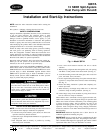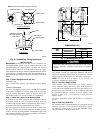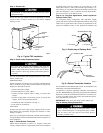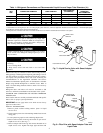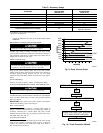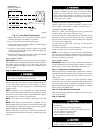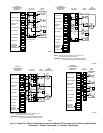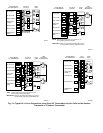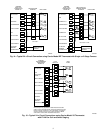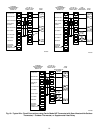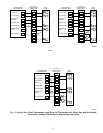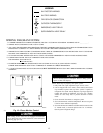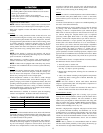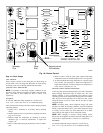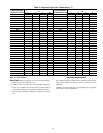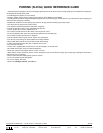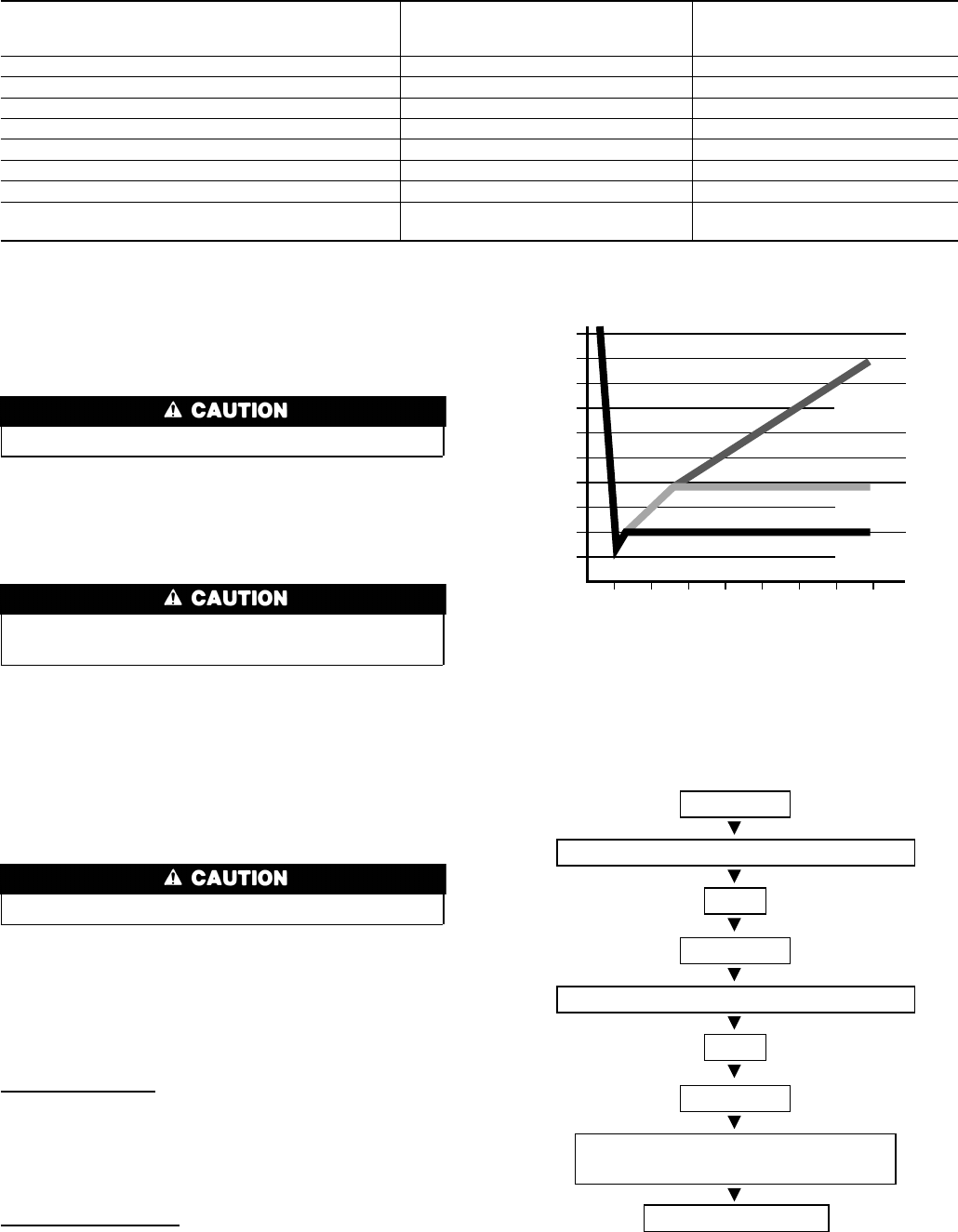
wrench an additional 1/12 turn (15 ft-lb). DO NOT OVER-
TIGHTEN.
REFRIGERANT TUBING AND FILTER DRIER
Installation of filter drier in liquid line is required.
Connect vapor tubing to fittings on outdoor unit vapor service
valves. Connect liquid tube to filter drier. (See Table 1 and Fig. 8.)
Use refrigerant grade tubing. Connect other end of filter drier to
adapter tube on liquid service valve.
SWEAT CONNECTION
To avoid valve damage while brazing, service valves must be
wrapped in a heat-sink material such as a wet cloth.
Wrap service valves and filter drier with a wet cloth or heat-
sinking material. Braze connections using either silver bearing or
non-silver bearing brazing material. Do not use soft solder
(materials which melt below 800°F.) Consult local code require-
ments.
LEAK CHECKING
Leak test all joints in indoor, outdoor, and refrigerant tubing.
EVACUATE REFRIGERANT TUBING AND INDOOR COIL
Never use the system compressor as a vacuum pump.
Refrigerant tubes and indoor coil should be evacuated using the
recommended deep vacuum method of 500 microns. The alternate
triple evacuation method may be used if the procedure outlined
below is followed.
IMPORTANT: Never open system under vacuum to atmosphere
without first breaking it open with nitrogen.
Deep Vacuum Method
The deep vacuum method requires a vacuum pump capable of
pulling a vacuum of 500 microns and a vacuum gage capable of
accurately measuring this vacuum depth. The deep vacuum
method is the most positive way of assuring a system is free of air
and liquid water. (See Fig. 9.)
Triple Evacuation Method
The triple evacuation method should only be used when vacuum
pump is only capable of pumping down to 28 in. of mercury
vacuum and system does not contain any liquid water. Refer to
Fig. 10 and proceed as follows:
Fig. 9—Deep Vacuum Graph
A95424
500
MINUTES
01234567
1000
1500
LEAK IN
SYSTEM
VACUUM TIGHT
TOO WET
TIGHT
DRY SYSTEM
2000
MICRONS
2500
3000
3500
4000
4500
5000
A95424
Fig. 10—Triple Evacuation Method
A95425
CHECK FOR TIGHT, DRY SYSTEM
(IF IT HOLDS DEEP VACUUM)
EVACUATE
BREAK VACUUM WITH DRY NITROGEN
WAIT
EVACUATE
CHARGE SYSTEM
BREAK VACUUM WITH DRY NITROGEN
EVACUATE
WAIT
Table 2—Accessory Usage
ACCESSORY
REQUIRED FOR LOW-AMBIENT
APPLICATIONS
(BELOW 55°F)
REQUIRED FOR LONG-LINE
APPLICATIONS*
(OVER 50 FT)
Crankcase Heater Yes Yes
Evaporator Freeze Thermostat Yes No
Compressor Start Assist—Capacitor and Relay Yes Yes
Puron® Low-Ambient Pressure Switch Yes No
Wind Baffle See Low-Ambient Instructions No
Support Feet Recommended No
Hard Shutoff TXV Yes† Yes†
Liquid-Line Solenoid Valve for Heating No
See Long-Line
Application Guideline
* Fortubing linesets between50 and175 ft,or whenvertical differenceis greaterthan 20ft, referto ApplicationGuideline andService Manual— ResidentialSplit-System
Air Conditioners and Heat Pumps Using Puron®.
† Required for all applications.
5



